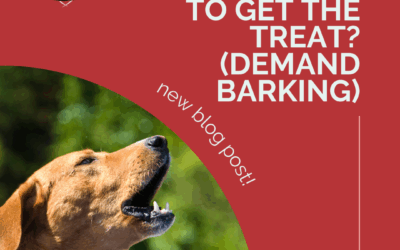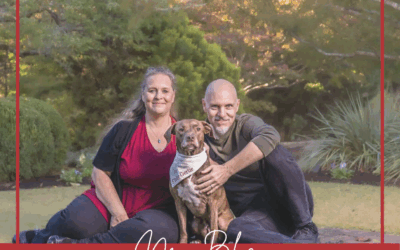I have a request and it may seem weird, but please stop having people try to hand feed your fearful dog. Nearly every client that comes to me with a dog who is afraid of strangers tells me at one point they’ve tried to get people to hand feed their dog. And I understand. We’ve been told that food is the way to train dogs and to get them to like things. And that’s right. Except it’s missing the critical piece that in order to hand feed a dog, the person – the very thing your dog is afraid of – needs to get into your dog’s personal space to deliver the food. If you have a dog who is afraid of strangers, this proximity automatically puts your dog over threshold and puts that stranger within biting range.
I’ve had several clients come to me after trying this and say something like “we gave our friend some chicken to feed the dog and the dog took the chicken and then bit their hand.” And this happens often.
This is one of those pieces of advice that I’ve talked about – well-meaning friends and family handing out dog training advice without an understanding of how animals learn or a grasp of controlling and managing thresholds. The number one rule for working with fearful dogs is keeping the dog safe and having a stranger stick their hand into your dog’s face, even to deliver high value food, is automatically pushing that dog over their safety point. Same is true with sticking your hand out to “let the dog smell you” or “show the dog you’re not a threat.” Dogs have an incredible sense of smell. You do not need to stick your hand into their face for them to smell you. And by doing this, if the dog is afraid, you’re just confirming that, because now you’ve invaded the dog’s personal space.
So please, just stop having people hand feed your dog. When working with stranger danger dogs there are a lot of nitty gritty details that go into food delivery, what food, the order of events and all the rules of the science behind the classical conditioning and desensitization process that we do in order to help dogs create new, positive associations and teach them strangers are safe. Food is definitely a big part of this, but it by no means the only part of this. And if you’re just delivering food and not doing all the other things in the right order, it’s not going to work. This is why so many people come to me saying “oh, I tried food. It didn’t work.” That’s because they weren’t doing it the right way.
Reading body language, knowing your dog’s subtle stress signs and knowing when to make things a little harder are also part of the puzzle. And none of those things skills require food. If you need help understanding dog communication, download my free handout here.
If you need help, please schedule your session here! I will be on vacation from July 2-18 but look forward to helping you when I return. In the meantime, please keep your dog feeling safe.
Happy training!
![]()




